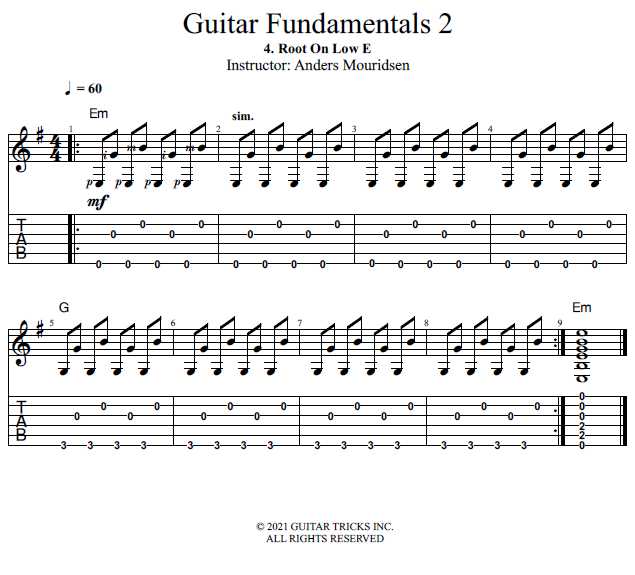Root On Low E
Now let's check out how to adapt our finger picking pattern to work with chords have the root note on the low E string, like E minor and G major for example.
A minor and C major both have their root note on the A string, so that's where we had our thumb. Now for E minor and G major we have our root note on the low E string. Now you're free to choose any of the remaining 5 notes for your index and middle finger, and they'll all sound good in different ways. Let's take a moment to explore all the options.

Instructor
Anders Mouridsen
- Styles:
- Any Style
- Difficulty:
-
